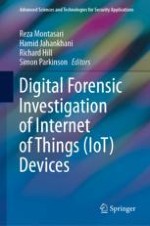2021 | OriginalPaper | Chapter
Towards a Generic Approach of Quantifying Evidence Volatility in Resource Constrained Devices
Authors : Jens-Petter Sandvik, Katrin Franke, André Årnes
Published in: Digital Forensic Investigation of Internet of Things (IoT) Devices
Publisher: Springer International Publishing
Activate our intelligent search to find suitable subject content or patents.
Select sections of text to find matching patents with Artificial Intelligence. powered by
Select sections of text to find additional relevant content using AI-assisted search. powered by
